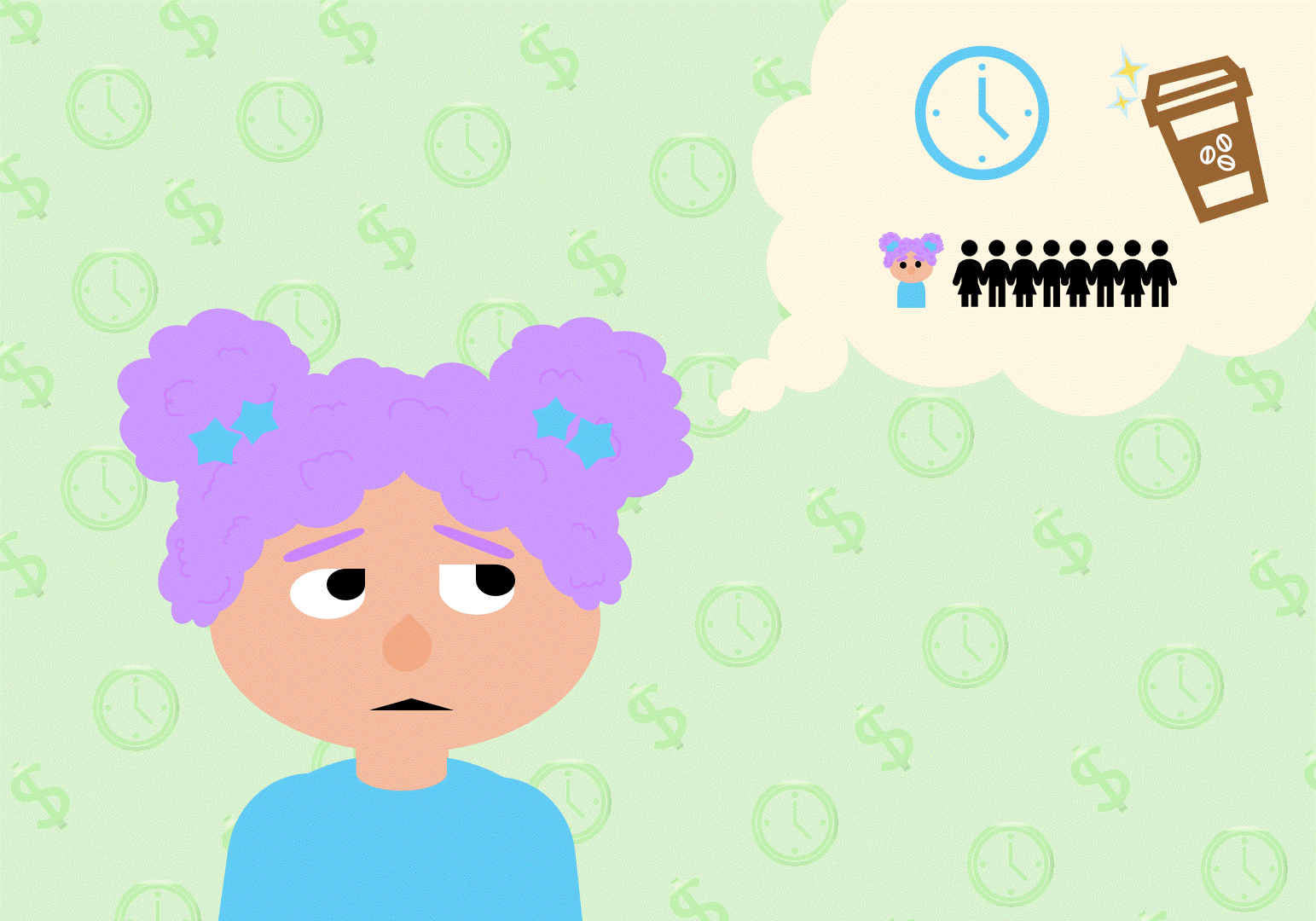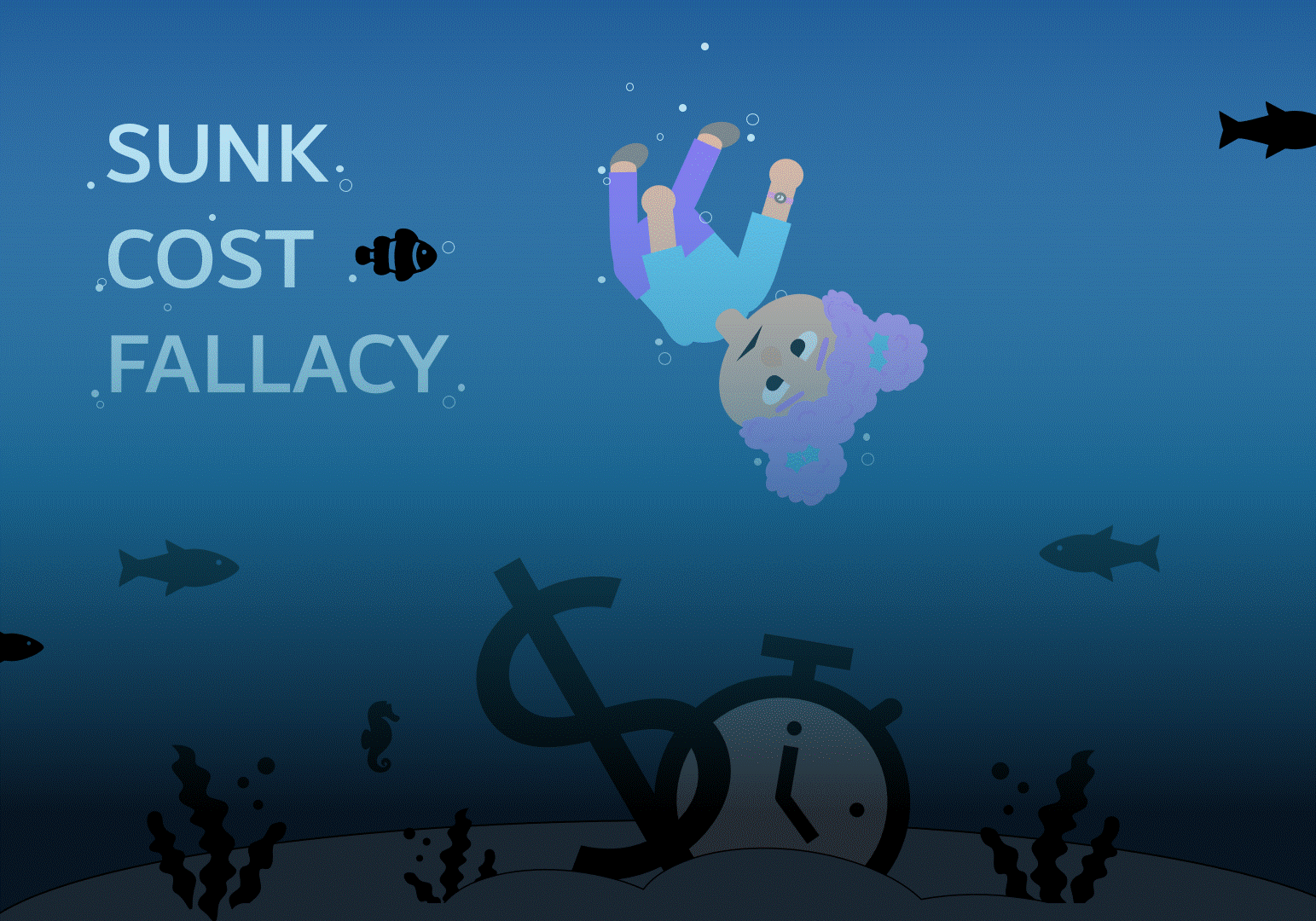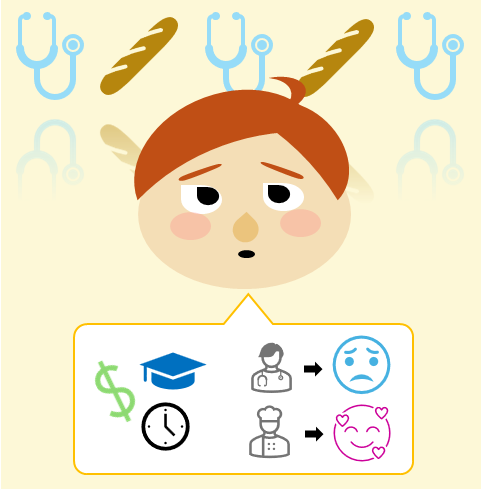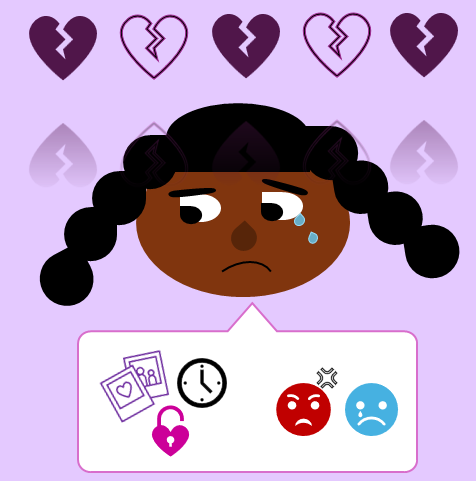Imagine you’re standing in line at a brand new coffee shop. It's a super long line and you’ve already been waiting for an hour.
As the line moves up slowly, you keep checking the time and debating if this coffee is even worth it. At this rate, you'll end up being late for your class and who knows if their coffee is any good.
You think to yourself: "I've already waited so long, I can't leave the line now..."
 Image by Phyllis Ung
Image by Phyllis Ung
The logical choice might be to just walk away, but you feel like you need to "get your money's worth" out of the time you’ve spent waiting. This familiar feeling is known as the sunk cost fallacy, a phenomenon that can affect your day-to-day decisions.
Learn how to overcome sunk cost fallacy so you can make better decisions!
What is the sunk cost fallacy?
 Image by Phyllis Ung
Image by Phyllis Ung
The sunk cost fallacy refers to our tendency to keep going with something we've already invested a lot into — whether it’s time, money, effort, or emotions — even when it’s clear that quitting would be the smarter choice.
When you've invested time or money into something, you're more likely to feel guilty about quitting. It can apply to more significant issues, like staying invested in a failing business, or smaller things, such as sticking with a boring movie you started.
When we let the sunk cost fallacy affect our decisions, it can lead us to make choices that aren't in our best interest and can even be harmful.
Sunk Cost Fallacy Examples
Example 1: Career Dissatisfaction
Ben, who has spent years studying and working as an doctor, hesitates to change his career, even though he's unhappy and dreams to own his own bakery. He feels his 10+ years of medical training and costly degree would go to waste.
However, by sticking with a job that he dislikes, it may lead to long-term unhappiness and potential health issues for Ben.
 Image by Phyllis Ung
Image by Phyllis Ung
Example 2: Toxic Relationship
Shannon is no longer happy in her relationship that has become increasingly toxic with her long-term partner. Because of the time and emotional energy she's already invested into the relationship, she hesitates to break up with him.
Rather than moving forward and prioritizing her well-being, Shannon holds onto the past.
 Image by Phyllis Ung
Image by Phyllis Ung
Tips to Combat the Sunk Cost Fallacy

Focus on the present and future. When making decisions, concentrate on what benefits you now and in the future.
Reframe your thinking. Instead of focusing on how much time/money you spent, think of what you might be missing out on or where you can redirect your energy and resources to instead. Remember, sunk costs can't be recovered.
Create clear goals. Define clear goals for yourself. This way, you can always reference your goals to ensure your decisions are aligning with your goals instead of focusing on sunk costs.
Give yourself permission to walk away. Repeat after me: "It’s okay to quit if something is no longer serving you!"
Ask for feedback: Don't hesitate to ask a trusted friend, mentor, or colleague for a second opinion on your situation.
Quiz
Sue dislikes the book she chose for her report because it's boring. She's considering switching to a different book, but she hesitates as she has already read halfway through the book. Which of these strategies can help Sue make a decision?
Take Action

To overcome the sunk cost fallacy in your life:
Your feedback matters to us.
This Byte helped me better understand the topic.




